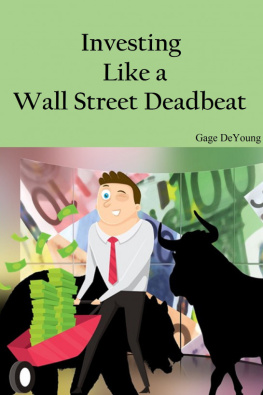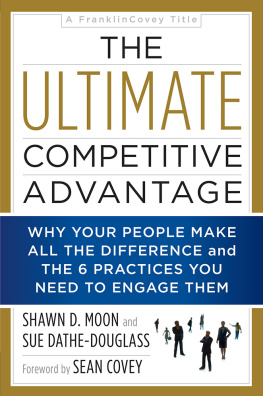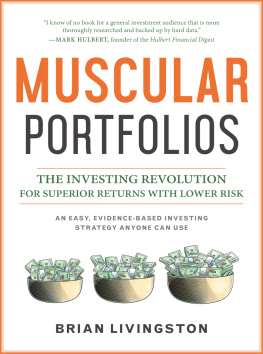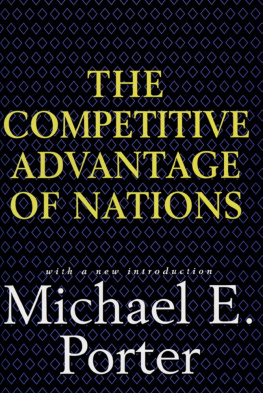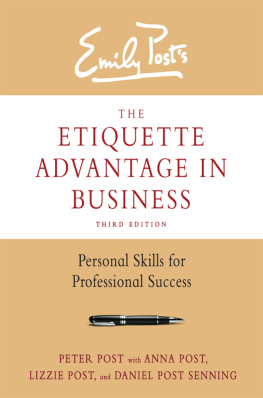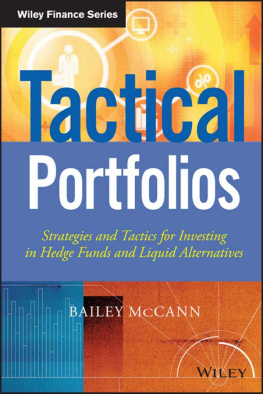Steven Abrahams - Competitive Advantage in Investing: Building Winning Professional Portfolios
Here you can read online Steven Abrahams - Competitive Advantage in Investing: Building Winning Professional Portfolios full text of the book (entire story) in english for free. Download pdf and epub, get meaning, cover and reviews about this ebook. year: 2020, genre: Business. Description of the work, (preface) as well as reviews are available. Best literature library LitArk.com created for fans of good reading and offers a wide selection of genres:
Romance novel
Science fiction
Adventure
Detective
Science
History
Home and family
Prose
Art
Politics
Computer
Non-fiction
Religion
Business
Children
Humor
Choose a favorite category and find really read worthwhile books. Enjoy immersion in the world of imagination, feel the emotions of the characters or learn something new for yourself, make an fascinating discovery.
- Book:Competitive Advantage in Investing: Building Winning Professional Portfolios
- Author:
- Genre:
- Year:2020
- Rating:3 / 5
- Favourites:Add to favourites
- Your mark:
- 60
- 1
- 2
- 3
- 4
- 5
Competitive Advantage in Investing: Building Winning Professional Portfolios: summary, description and annotation
We offer to read an annotation, description, summary or preface (depends on what the author of the book "Competitive Advantage in Investing: Building Winning Professional Portfolios" wrote himself). If you haven't found the necessary information about the book — write in the comments, we will try to find it.
Steven Abrahams: author's other books
Who wrote Competitive Advantage in Investing: Building Winning Professional Portfolios? Find out the surname, the name of the author of the book and a list of all author's works by series.
Competitive Advantage in Investing: Building Winning Professional Portfolios — read online for free the complete book (whole text) full work
Below is the text of the book, divided by pages. System saving the place of the last page read, allows you to conveniently read the book "Competitive Advantage in Investing: Building Winning Professional Portfolios" online for free, without having to search again every time where you left off. Put a bookmark, and you can go to the page where you finished reading at any time.
Font size:
Interval:
Bookmark:

- Chapter 6
- Chapter 7
- Chapter 8
- Chapter 9
- Chapter 10
- Chapter 11
- Chapter 12
- Chapter 13
- Chapter 14
- Chapter 16
- Chapter 1
- Chapter 2
- Chapter 3
- Chapter 4
- Chapter 5
- Chapter 8
- Chapter 9
- Chapter 10
- Chapter 11
- Chapter 12
- Chapter 13
- Chapter 14
- Chapter 15
- Chapter 16
Steven Abrahams

This edition first published 2020.
Copyright 2020 by Steven Abrahams
All rights reserved. No part of this publication may be reproduced, stored in a retrieval system, or transmitted, in any form or by any means, electronic, mechanical, photocopying, recording or otherwise, except as permitted by law. Advice on how to obtain permission to reuse material from this title is available at http://www.wiley.com/go/permissions.
The right of Steven Abrahams to be identified as the author of this editorial material in this work has been asserted in accordance with law.
Registered Office(s)
John Wiley & Sons, Inc., 111 River Street, Hoboken, NJ 07030, USA
Editorial Office
111 River Street, Hoboken, NJ 07030, USA
For details of our global editorial offices, customer services, and more information about Wiley products visit us at www.wiley.com.
Wiley also publishes its books in a variety of electronic formats and by print-on-demand. Some content that appears in standard print versions of this book may not be available in other formats.
Limit of Liability/Disclaimer of Warranty
While the publisher and authors have used their best efforts in preparing this work, they make no representations or warranties with respect to the accuracy or completeness of the contents of this work and specifically disclaim all warranties, including without limitation any implied warranties of merchantability or fitness for a particular purpose. No warranty may be created or extended by sales representatives, written sales materials or promotional statements for this work. The fact that an organization, website, or product is referred to in this work as a citation and/or potential source of further information does not mean that the publisher and authors endorse the information or services the organization, website, or product may provide or recommendations it may make. This work is sold with the understanding that the publisher is not engaged in rendering professional services. The advice and strategies contained herein may not be suitable for your situation. You should consult with a specialist where appropriate. Further, readers should be aware that websites listed in this work may have changed or disappeared between when this work was written and when it is read. Neither the publisher nor authors shall be liable for any loss of profit or any other commercial damages, including but not limited to special, incidental, consequential, or other damages.
Library of Congress Cataloging-in-Publication Data
Names: Abrahams, Steven, 1959- author.
Title: Competitive advantage in investing : building winning professional portfolios / Steven Abrahams.
Description: First Edition. | Hoboken : Wiley, 2020. | Includes index.
Identifiers: LCCN 2019056753 (print) | LCCN 2019056754 (ebook) | ISBN 9781119619840 (cloth) | ISBN 9781119619857 (adobe pdf) | ISBN 9781119619864 (epub)
Subjects: LCSH: Investments. | Portfolio management.
Classification: LCC HG4521 .A216 2020 (print) | LCC HG4521 (ebook) | DDC 332.6dc23
LC record available at https://lccn.loc.gov/2019056753
LC ebook record available at https://lccn.loc.gov/2019056754
Cover Design: Wiley
Cover Image: ChubarovY/Getty Images
To Maryann and Stuart,
who got me started,
and to Valerie, Ben, Margot, and Jake,
who kept me going.
Take a little time at some point to look over the public portfolios of a few larger investors. Pick a mix of mutual funds or hedge funds or banks or insurers, for example. It could include almost any professionally managed portfolio. It should start to become clear that investing takes place over a wide and diverse landscape.
Each portfolio will differ from others in ways large and small. Each manager will describe the business in different terms. Some will talk about stocks, some about bonds, some about things different altogether. Some will emphasize income, some will emphasize price. Some will talk stability, others not. Issues important to one will barely show up in the notes for another. Each portfolio will seem to run like a separate business. And that is true for the thousands of portfolios that come into the markets every day.
Similar to any other business, investment portfolios compete to make the best out of opportunities that flow through the markets daily. Similar to any other business, the most successful assess themselves and others up and down the line and create and sustain competitive advantage. Plenty of good work has challenged the ability of any investor to consistently beat the competition. But practitioners and students of finance increasingly realize some portfolios simply are better positioned than others to generate quality returns. The reasons vary, but the best investors know their relative strengths and weaknesses and try to anticipate circumstances where their strengths might capture returns unavailable to others in the market. The competitive landscape constantly evolves. Investing is a competition, but not everyone is playing the same game.
Most of the written work on investing barely reflects the diversity of portfolios and the competition between them. The daily press and most magazines, journals, and books usually offer an eclectic mix. There's the daily drama of winners and losers. There's nuts-and-bolts advice for practitioners. There are formal treatments of finance that abstract away from the institutional details of the markets. Between these islands of information is a sparse archipelago. This book tries to build a bridge from daily headlines to the actual work of most institutional portfolio managers and on to the formal literature on investing.
The formal literature does capture an important strand of institutional investing in its emphasis on balancing risk and return. This strand tends to view investing as a world of assets with particular expected risks, returns, and correlations. In the version of this world that has dominated formal finance since the 1950s, all investors see the future in just the same way and share the same expectations of asset performance. In its strongest form, the formal work in finance largely rules out the possibility of portfolios with sustainable strengths and weaknesses. This line of work has produced important insight into the best ways to trade off return against risk in both individual investments and portfolios. It has put an important spotlight on the value of diversification. And it has led to valuable tools for breaking investor performance into the part likely due to simply taking risk and the part due to the managers' skill. At some point, practicing institutional investors do balance the relative value of different assets and try to add something to portfolio performance.
Next pageFont size:
Interval:
Bookmark:
Similar books «Competitive Advantage in Investing: Building Winning Professional Portfolios»
Look at similar books to Competitive Advantage in Investing: Building Winning Professional Portfolios. We have selected literature similar in name and meaning in the hope of providing readers with more options to find new, interesting, not yet read works.
Discussion, reviews of the book Competitive Advantage in Investing: Building Winning Professional Portfolios and just readers' own opinions. Leave your comments, write what you think about the work, its meaning or the main characters. Specify what exactly you liked and what you didn't like, and why you think so.



